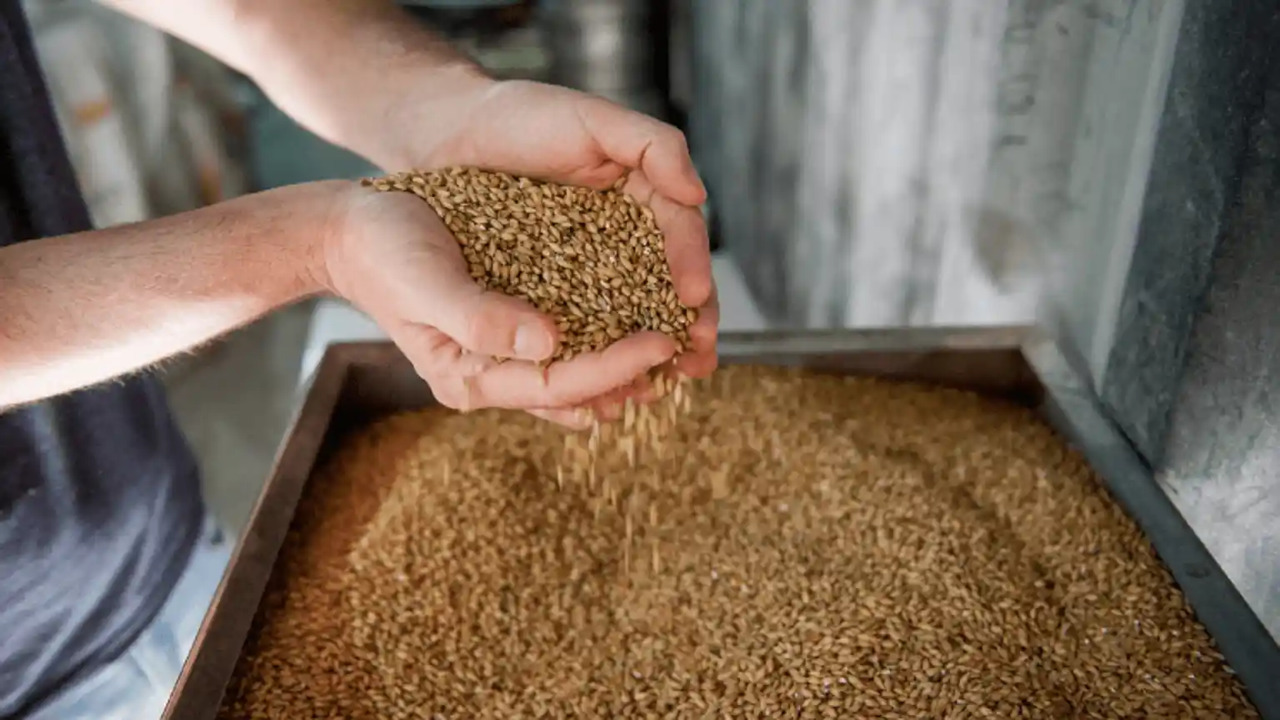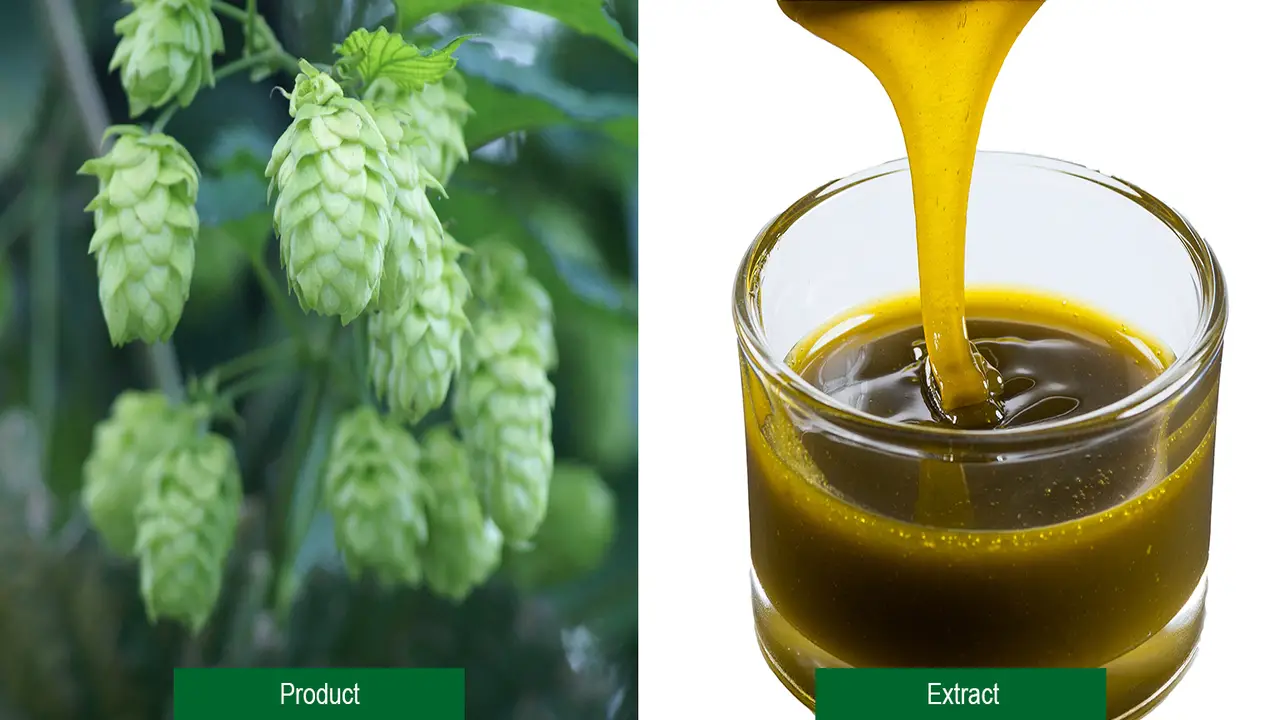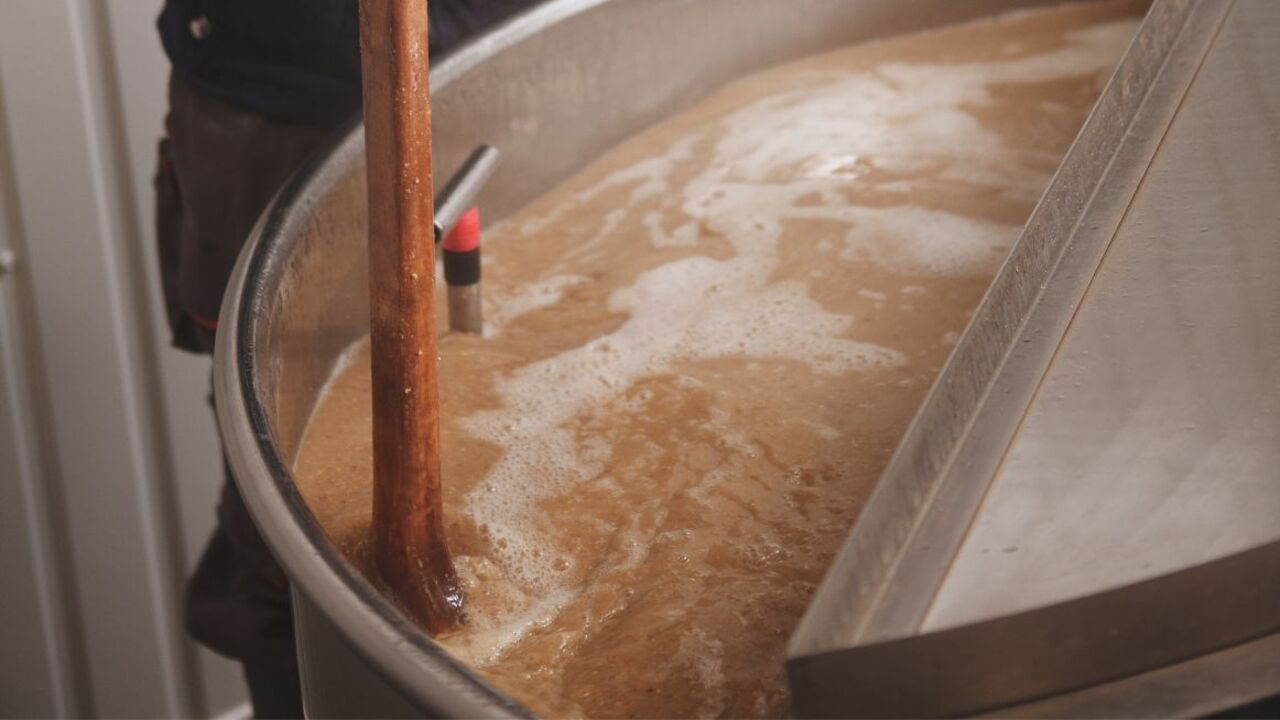Brewing traditional German Hefeweizen is an art form that combines rich history. Meticulous craftsmanship and a deep appreciation for the distinct flavours of this renowned beer style.
Hefeweizen, meaning “yeast wheat,” is a top-fermented wheat beer from Bavaria, Germany. Its unique characteristics include its cloudy appearance, banana and clove flavours, and effervescent carbonation. Have made it a beloved choice among beer enthusiasts worldwide. The importance of how to brew traditional German Hefeweizen lies in its cultural significance and the preservation of a time-honoured brewing tradition.
By following the traditional methods, brewers can create a beer that embodies the essence of German craftsmanship and showcases the distinct flavours that have captivated beer lovers for centuries.
With the right ingredients, equipment, and knowledge, enthusiasts can craft authentic Hefeweizen. Paying homage to a style deeply rooted in German beer culture.

History Of Hefeweizen
Hefeweizen is a beer that originated in Bavaria, Germany, in the 16th century. “It” translates to “yeast wheat” in German, accurately describing the two main ingredients used to make the beer. Brewers typically use a high percentage of wheat to brew Hefeweizen.
This gives it a cloudy appearance and a specific yeast strain that produces fruity and spicy flavours. Over the centuries, Hefeweizen has become a popular beer style worldwide, with many breweries putting their spin on the classic recipe.
Ingredients For Brewing Hefeweizen
Hefeweizen continues to be a beloved beer for its refreshing taste and historical significance. when combined with the appropriate brewing techniques, it will help you create an authentic and delicious batch of Hefeweizen beer. To brew Hefeweizen, you will need the following ingredients:
- Wheat Malt: Hefeweizen is characterized by its high proportion of wheat malt, which provides the beer with its distinct flavour and cloudy appearance.
- Pilsner Malt: This light-coloured malt serves as the base malt and gives the beer a clean and crisp character.
- Hops: Hefeweizen typically has low hop bitterness, so a mild and noble hop variety such as Hallertau or Tettnang is commonly used for balancing the sweetness of the malt.
- Yeast: The yeast used in brewing Hefeweizen is crucial for its signature banana and clove flavours. Traditional Hefeweizen yeast strains, such as Saccharomyces cerevisiae, produce these esters and phenols during fermentation.
- Water: Brewing water plays a significant role in Hefeweizen production. It should have a balanced mineral profile, resembling the soft water traditionally found in Bavaria.
- Optional: Some brewers may add spices or fruit peel to enhance the flavour profile of their Hefeweizen, but this is not a necessary ingredient for a traditional version.
Equipment Needed For Brewing Hefeweizen
Proper equipment and techniques are crucial to producing high-quality beer that is safe to consume. Investing in quality equipment can help ensure consistent results and a better overall brewing experience. These equipment items will provide the tools to successfully brew your batch of Hefeweizen beer at home or in a commercial setting. To brew Hefeweizen, you will need the following equipment:
- Brewing Kettle: A large kettle is necessary for boiling your ingredients, such as malt and hops. It should have a capacity that can accommodate your desired batch size.
- Fermentation Vessel: A fermenter is essential for the primary fermentation process. It should be able to hold your batch comfortably and have an airtight seal to prevent contamination.
- Airlock: An airlock is a small device that fits into the opening of your fermentation vessel. It allows carbon dioxide produced during fermentation to escape, preventing air and bacteria from entering.
- Hydrometer: This instrument measures the specific gravity of your wort before and after fermentation, helping you determine the alcohol content and fermentation progress.
- Thermometer: A reliable thermometer is crucial to monitor and control the temperature during brewing and fermentation. It ensures you maintain the appropriate temperature range for yeast activity.
- Racking Cane and Tubing: These tools transfer the fermented beer from the primary fermenter to a secondary vessel or for bottling. They help minimize oxygen exposure and facilitate a smooth transfer.
- Cleaning and Sanitizing Supplies: Proper sanitation is essential in brewing. You will need cleaning agents, sanitisers, brushes, and other tools to maintain a clean, bacteria-free brewing environment.
How To Brew Traditional German Hefeweizen – Step-By-Step
The traditional German Hefeweizen is quite popular, both in Germany and around the world. It is a wheat beer known for its cloudy appearance and fruity, spicy flavour. Hefeweizens are often served in tall, narrow glasses and are a popular choice during the summer months.
While they may not be as widely consumed as other beer styles, Hefeweizens have a dedicated following among beer enthusiasts and are an essential part of Germany’s brewing tradition. Here are the step-by-step guides on how to brew traditional German hefeweizen.
1. Selecting The Right Wheat Malt And Yeast

Choosing the appropriate wheat malt and yeast is crucial to brew a traditional German Hefeweizen. Opt for high-quality malt with a significant percentage of wheat to achieve the beer’s characteristic body and flavour. Look for malt that is specifically labelled as suitable for Hefeweizen.
Similarly, select a yeast strain that produces the desired banana and clove esters typical of Hefeweizen. Traditional German Hefeweizen yeast strains like Weihenstephan or Wyeast 3068 are excellent choices. Consider factors such as fermentation temperature range and desired flavour profile when making your selection.
2. Sanitizing And Cleaning Your Brewing Gear
Maintaining a clean and sanitized brewing environment is essential to prevent contamination and off flavours in your Hefeweizen. Thoroughly clean all your equipment with a suitable cleaner, removing all residue before starting the brewing process.
Once cleaned, sanitize all surfaces, equipment, and utensils that will come in contact with the wort and beer. Use a food-grade sanitizer and follow the manufacturer’s instructions for proper dilution and contact time. Pay extra attention to fermenters, airlocks, racking canes, and any other tools that will directly interact with the beer.
3. Combining Grains And Water To Create A Sweet Wort
To create the sweet wort base for your Hefeweizen, you’ll need to combine the selected grains and water in a process called mashing. Heat the required amount of water to a specific temperature range and add the crushed grains, which typically include wheat malt and a portion of pilsner malt.
Stir the mixture thoroughly, ensuring there are no dry pockets of grains. Maintain the mash temperature within the recommended range to allow enzymes to convert starches into fermentable sugars.
After the mashing period, lautering and sparging separates the liquid wort from the spent grains. Combining grains and water sets the foundation for the beer’s flavour and body, preparing it for the next steps of the brewing process.
4. Extracting Bitterness And Flavor From Hops

While Hefeweizen is not known for its strong hop bitterness, hops still play a crucial role in balancing the sweetness and adding subtle flavours to the beer. Select mild and noble hop varieties such as Hallertau or Tettnang, which complement the delicate nature of Hefeweizen.
The hops are typically added during the boil, and the timing and quantity depend on the desired bitterness level. A shorter boil time of around 60 minutes is common for Hefeweizen, allowing for a milder hop profile. During the boil, hops release alpha acids, which contribute to bitterness, and volatile compounds that provide floral or herbal aromas.
5. Rapidly Lowering The Temperature Of Your Wort
After the boil, it’s crucial to cool down the wort to the appropriate fermentation temperature rapidly. The quick cooling helps prevent bacterial contamination and unwanted off-flavours. Using an immersion chiller or a counterflow chiller can efficiently and effectively cool down the wort.
These devices use cold water to transfer heat away from the wort, bringing it to the desired temperature range. It is essential to monitor the temperature closely and avoid prolonged exposure to air during this cooling process.
6. Adding Yeast And Allowing The Beer To Age

With the cooled wort in your fermenter, it’s time to add the selected Hefeweizen yeast. Follow the instructions provided by the yeast manufacturer for rehydration or direct pitching. Gently stir or rock the fermenter to ensure even distribution of the yeast throughout the wort.
Then, seal the fermenter with an airlock to allow carbon dioxide to escape while preventing external contaminants from entering. The fermentation process typically takes place at a specific temperature range, around 18-24°C (64-75°F), depending on the chosen yeast strain.
Allow the beer to ferment undisturbed for the recommended period. Typically 1-2 weeks, the yeast converts sugars into alcohol, producing the desired flavours and aromas.
7. Allowing The Beer To Mature And Clarify
Once primary fermentation is complete, allowing the beer to undergo a period of maturation is beneficial. This stage, known as secondary fermentation or conditioning, allows the flavours to mellow and the beer to clarify.
Transferring the beer to a secondary fermenter or leaving it in the Primary fermenter for an extended period allows any remaining suspended particles to settle. Keep the temperature stable and within the yeast’s recommended range during this phase, allowing the flavours to further develop and the beer to become clearer over time. The duration of maturation can vary, typically from a few days to a couple of weeks.
8. Adding CO2 To The Beer To Create Bubbles
You’ll need to add carbon dioxide (CO2) to the beer to achieve the desired carbonation in your Hefeweizen. There are two primary methods for carbonation: bottle conditioning and keg carbonation. The brewer adds a small amount of fermentable sugar or priming solution to the beer before bottling it for bottle conditioning.
The remaining yeast consumes the added sugar, producing CO2 trapped in the bottle, creating natural carbonation. The bottles need to be sealed and stored at a suitable temperature for the yeast to carbonate the beer over time.
The beer is force-carbonated in keg carbonation by applying pressurized CO2 directly into the keg. The carbonation level can be adjusted based on personal preference. Both methods allow for carbonation, creating the characteristic effervescence and refreshing bubbles in your Hefeweizen.
Preparing Your Beer For Storage And Serving
With your Hefeweizen carbonated and matured, it’s time to prepare it for storage and serving. If you have bottled the beer, ensure the bottles are properly sealed and stored in a cool, dark place to avoid light exposure and maintain flavour stability. Store the bottles upright to minimize yeast sediment disturbance when pouring.
Ensure you properly seal and connect the keg to a CO2 source to maintain carbonation if you have kegged the beer. Refrigerate the keg at the appropriate temperature for serving. When ready to enjoy your Hefeweizen, pour it into a clean glass, leaving any sediment behind. Take a moment to appreciate the aroma, appearance, and flavours of the beer you have skillfully brewed.
Common Mistakes When Brewing Hefeweizen
While brewing Hefeweizen, it’s essential to be aware of common mistakes to avoid compromising the quality of your beer. By being mindful of these common mistakes and taking the necessary precautions, you can ensure a successful brewing experience and achieve a high-quality Hefeweizen. Some common mistakes include:
- Using the wrong yeast strain: A yeast strain that does not produce Hefeweizen’s characteristic flavours and aromas can result in a beer lacking the desired profile.
- Inadequate temperature control: Failing to maintain the appropriate fermentation temperature range can lead to off-flavours and esters that are not typical of Hefeweizen.
- Insufficient oxygenation: Oxygen exposure during fermentation can cause oxidation and off-flavours. One should aerate the wort before fermentation to ensure proper fermentation, but one should avoid excessive aeration.
- Poor sanitation: Inadequate cleaning and sanitization of brewing equipment can introduce unwanted bacteria or wild yeast, leading to off-flavours and potential spoilage.
Conclusion
Understanding how to brew traditional German Hefeweizen is crucial for anyone seeking to delve into the world of beer brewing and appreciate the nuances of this revered style. The significance of mastering this craft lies in the ability to replicate the distinct flavours and characteristics that make Hefeweizen so special.
By honouring the time-honored brewing techniques and embracing the specific ingredients and methods, brewers can ensure the authenticity of their creations.
The specificity of brewing traditional German Hefeweizen allows for a deep exploration of the art and science behind this beer style. From selecting the right yeast strains to maintaining the ideal fermentation temperature, each step plays a vital role in achieving the desired outcome.
The commitment to tradition ensures that the legacy of German brewing lives on and provides an avenue for professionals and homebrewers to experience the true essence of this iconic beer style.
FAQ’s
1.How Long Does It Take To Brew A Hefeweizen?
Ans: The brewing process for a Hefeweizen typically takes around 4-6 weeks from start to finish, depending on the recipe and brewing method.
2.What Type Of Yeast Is Best For Brewing A Hefeweizen?
Ans: The best yeast for brewing a Hefeweizen is a strain of yeast called Weihenstephan Weizen, known for producing the classic banana and clove flavours characteristic of this beer style.
3.How Much Wheat Malt Should I Use When Brewing A Hefeweizen?
Ans: A typical recipe for brewing a Hefeweizen calls for around 50% wheat malt and 50% Pilsner malt, although some recipes may call for slightly different ratios depending on the brewer’s preference.
4.What Is The Ideal Alcohol Content For A Hefeweizen?
Ans: The ideal alcohol content for a Hefeweizen is between 4% and 6%, although some brewers may choose to brew their beer with a slightly higher or lower alcohol content.
5.How Should I Serve A Hefeweizen?
Ans: A Hefeweizen should be served in a tall, narrow glass with a wide mouth, such as a Weizen glass. The beer should be poured slowly to preserve the carbonation and create a thick, creamy head.

I’m a writer and blogger who loves to talk about entertainment, culture, and relationships. I love to share my thoughts and insights on these topics, and I’m always looking for new ways to engage with my readers. I’m also a big fan of learning new things, so I’m always exploring new areas of interest.
